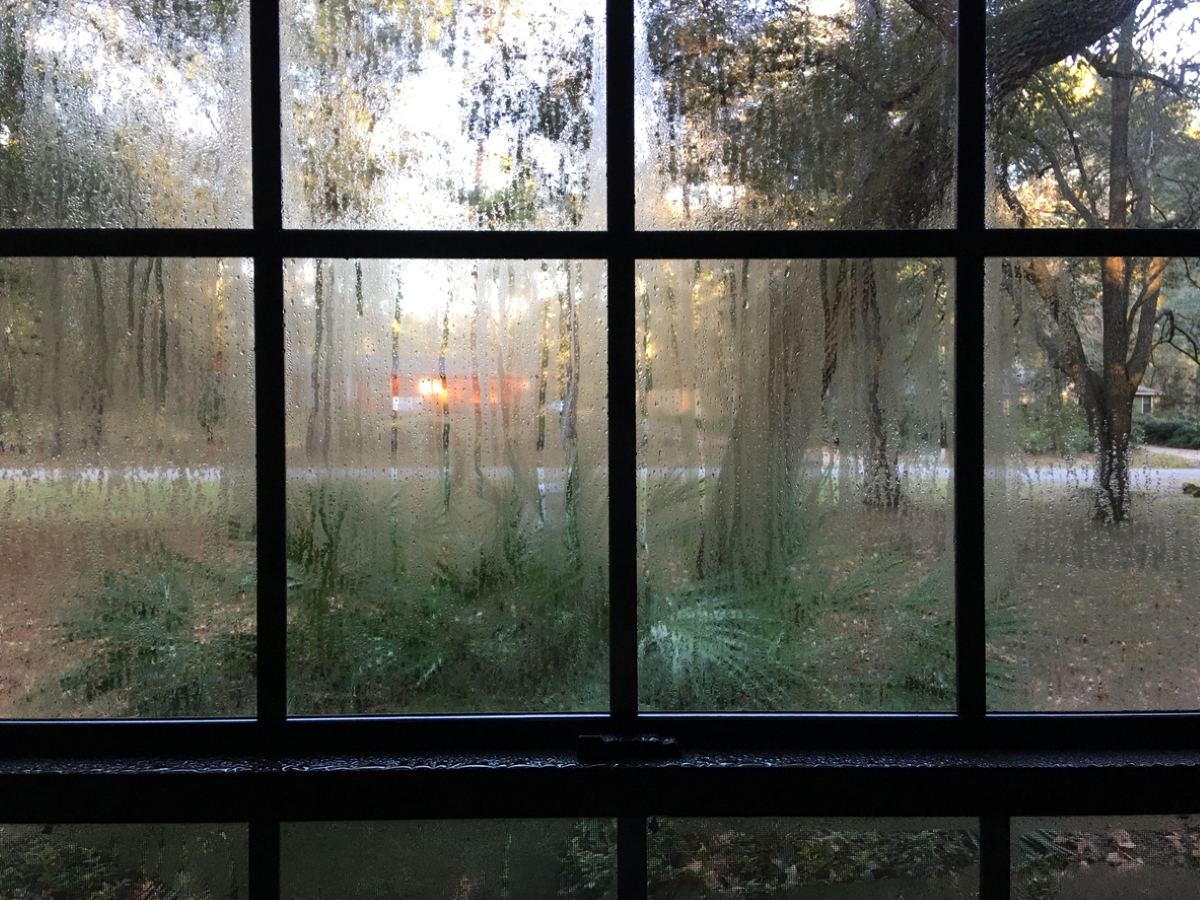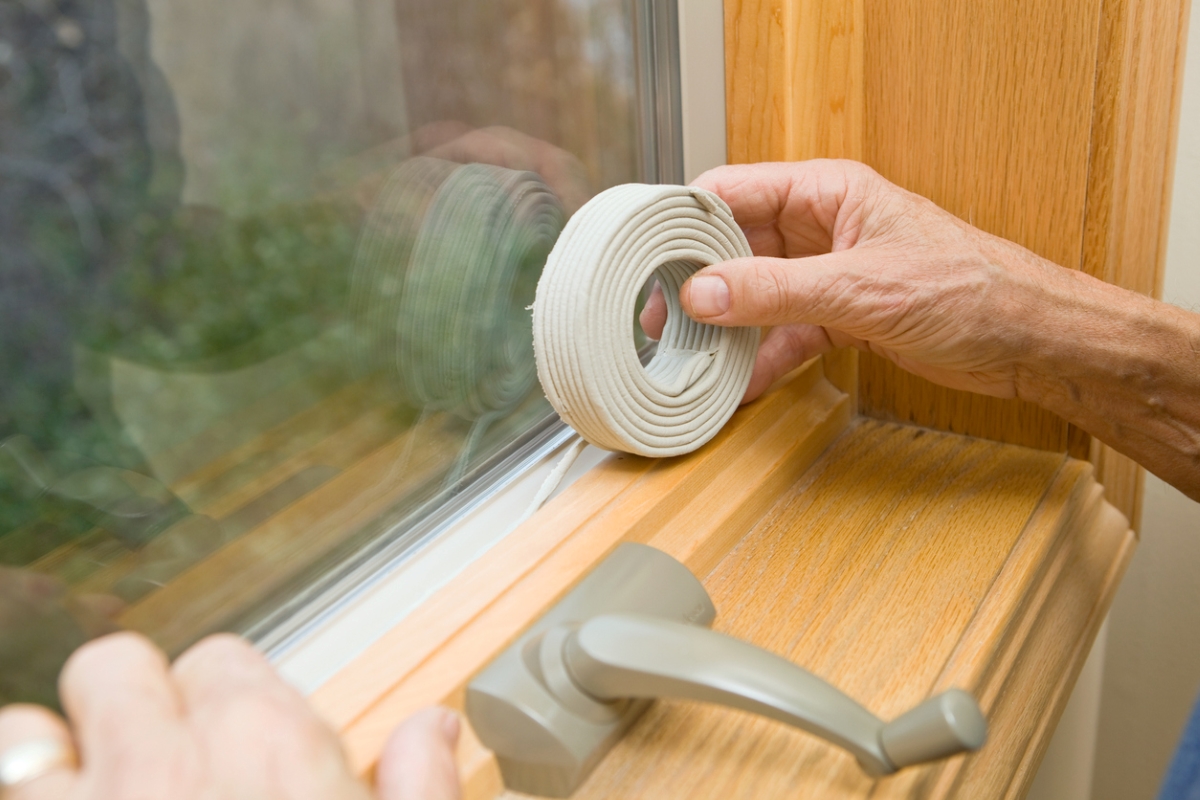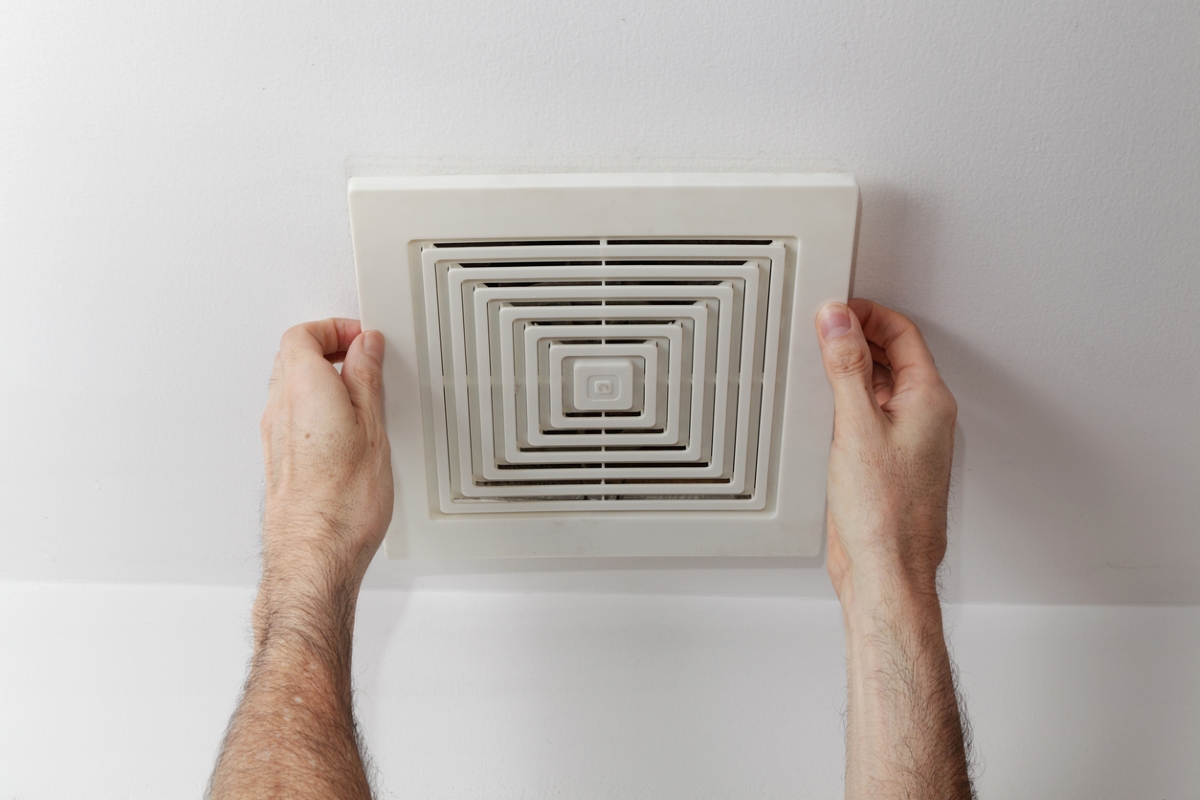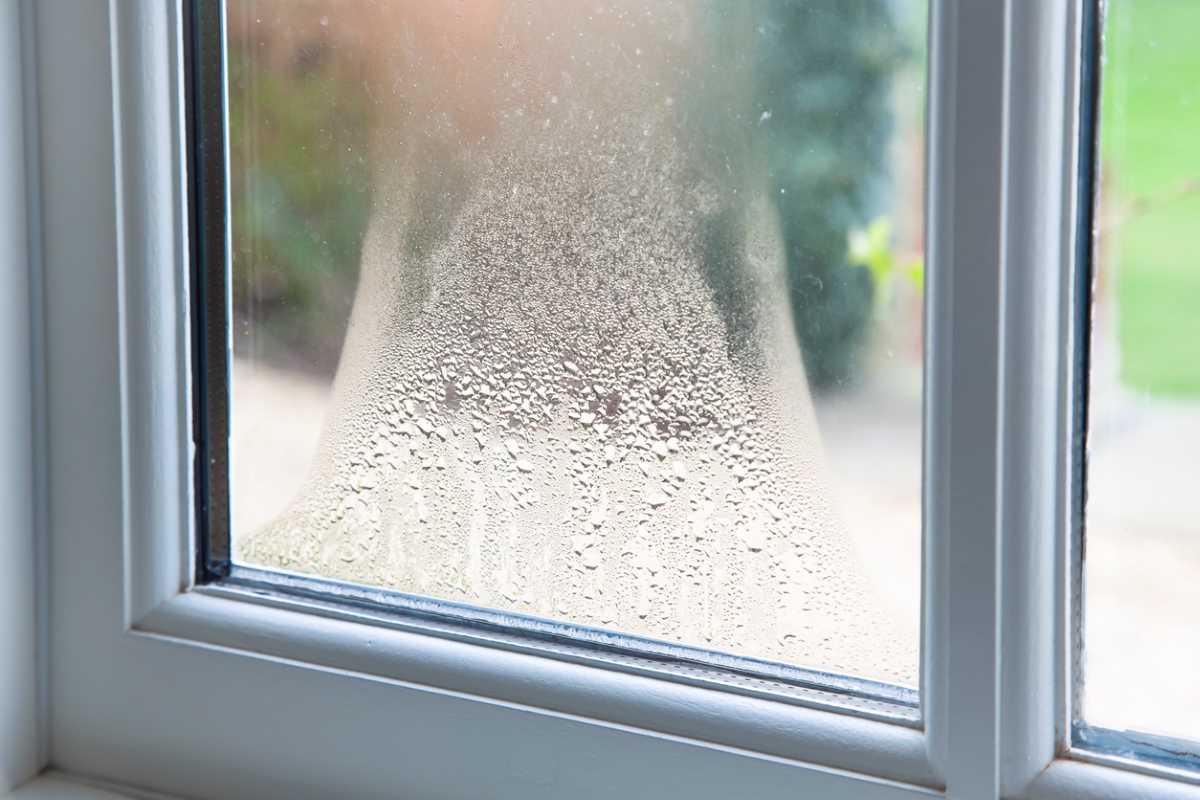We may earn revenue from the products available on this page and participate in affiliate programs. Learn More ›
Q: When it’s cold outside, there’s frequently condensation on windows inside my home. I wipe them down, but the moisture keeps coming back. How big a problem is this, and what can I do to prevent it?
A: The short answer? Moisture buildup isn’t a huge issue on its own. Left untreated, it can lead to more serious problems like mold, mildew, and water damage. Tracking down the root cause of condensation on the inside of windows can be tricky, but in general, window condensation occurs when warm, moist indoor air collides with a cooler surface. Because glass is one of the coldest materials in your home, excess water vapor condenses there first, causing that all-too-familiar fog effect. If the inside of your window simply refuses to dry up, we can help you track down the source.
What causes condensation inside windows?

Before we get into the methods one can take to prevent window condensation, it’s important to understand why it happens.
Condensation on the inside of windows occurs when warm air comes into contact with a cool window pane. As the warm air cools, it releases its moisture in the form of water droplets or fog on the glass (aka condensation).
This commonly occurs during colder months, when indoor humidity levels are high compared to the cold windows from the outside weather.
High indoor humidity levels is “the main culprit,” of window condensation, says Alex Motronchik, founder of the Sacramento-based window and siding company Best Exteriors. “Activities like cooking, showering, and even breathing add moisture to the air, which condenses on cold surfaces like windows.”
Here are a few steps you can take to keep your windows from fogging up, and determine whether a bigger problem might be causing the condensation
Take a closer look at where the condensation appears.
If you live in an old house with equally old windows, take note of where the condensation is showing up. Double- or triple-pane windows often have a layer of inert gas (like argon) between two glass panes that minimizes the likelihood of glass reaching the dew point and causing condensation. Moisture between the glass is usually caused by a faulty seal. If that’s the case, consider yourself lucky: You can correct the problem by replacing the insulated glass panel, and it’s a relatively inexpensive fix.
Weatherize your windows.

Whether or not you found a bad seal, preventing condensation on windows starts with good insulation. In especially old homes, adding a storm window and weatherstripping accomplishes much of what newer, higher-tech windows do at a fraction of the price. Even better, you’ll have warmer nights and lower energy bills. “Storm windows add an extra layer of insulation, potentially reducing condensation in cold climates,” Motronchik explains. “However, they’re not a magic bullet and require proper installation and ventilation to prevent moisture buildup between the panes.”
Those with brand-new windows or an abode built in the last decade probably have a little more troubleshooting to do: Modern homes are more buttoned-up than ever before, and they come with energy-efficient doors and windows that greatly reduce heat loss. But if you don’t crack your windows open once in a while over the winter, you could be trapping all that warm, moist air inside your house, creating or exacerbating steamy problems. To get that moisture under control, try some of the following strategies.
Start eliminating obvious sources of humidity.
Plants release moisture into the air as they grow, so move them off your windowsill during the cold season. And, if you use a humidifier at home, consider turning it off in the winter, or running it less frequently than you have in the past. It may be that the air in your home isn’t so dry that this appliance needs to run constantly.
“Placing windows directly above heaters can create hot and cold zones, increasing the risk of condensation on the colder window surface. Maintain some space for proper airflow. Invest in a hygrometer to keep close tabs on the humidity level.”
—Alex Motronchik, Founder, Best Exteriors Construction, Sacramento/Bay Area, California
Use exhaust fans to ventilate excess moisture.

Since the bathroom and kitchen are humidity hotspots, using an exhaust fan to send some of that excess moisture outside should help dry out indoor air. Most bathrooms have an exhaust fan, and the vent on your range hood can work the same magic in your kitchen. Be sure to turn the fans on whenever you’re bathing or cooking.
Check for other ventilation issues.
Just as water won’t collect on an empty glass, condensation won’t form on windows in a house that can’t hold humid air. “Tightly sealed homes lack proper airflow, trapping moisture inside,” Motronchik says.
Start your detective work in the laundry room by confirming that your dryer’s vent hose runs to the outside of your home. If it does (and the hose and duct are leak-free), your next stop should be your fireplace: Inspect the wall around your hearth for beading water. An unused, sealed fireplace limits air circulation, creating the perfect opportunity for mold and mildew to move in. If you notice a musty smell or discolored spots on your wall, your home may already be playing host to fungi.
Hire a pro to find the source of condensation.
If you’ve winterized your windows, ruled out the likely causes listed here, and checked for ventilation problems, hiring a home inspector (or a mold and mildew specialist) is your next course of action. They’re trained to look for other hidden sources of moisture, like rainwater seeping into your foundation or crawl space. Taking action quickly and working with a specialist will prevent further damage to your home, so it can be a smart investment.

